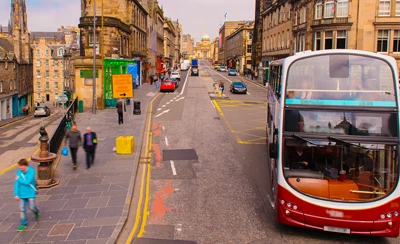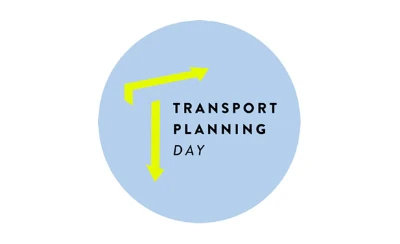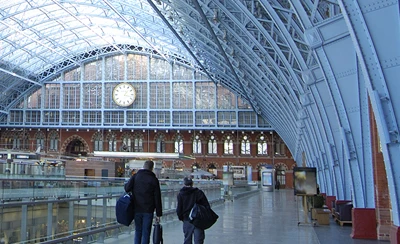Last year, I was delighted to be a recipient of a Transport Planning Society bursary to write a paper on the topic “The Climate Crisis – what more can transport planners do to address the climate emergency?”. My proposal was based on case studies of cities around the world that focused on the positive side of climate action. I felt that so often the message on climate focuses on the sacrifices needed to achieve it, and not so much on the benefits that come with decarbonisation.
After I found out I had been selected as a bursary recipient, I had to make the difficult decision of which cities to use as my case studies. My initial longlist included about 10 cities and their leaders from around the world, such as Mayor Anne Hidalgo in Paris, Lord Mayor Sally Capp in Melbourne, Chief City Planner Jennifer Keesmaat in Toronto and Mayor Enrique Peñalosa in Bogota. Given that my paper was limited to 5000 words, it would be a tall order to cover them all meaningfully. So I whittled it down to three: Sydney, New York City and Copenhagen.
Why I chose these cities
These cities stood out to me for a few reasons. Their geographic diversity meant that cries of “But that could never work here!” would potentially hold less sway. They were also cities that had set ambitious emissions reductions targets and had reinforced these strategies with extensive monitoring and reporting. The publicly available reports that each city produced on their progress made the process transparent and open, and were an enormous benefit to my research. And for each city I was able to focus on a slightly different element of their strategy and bring these together to create a roadmap that can be applied anywhere in the world.
Sydney
For the City of Sydney, I explored their public engagement strategy for the development of their long term city plan, Sydney 2050. This engagement was far reaching and innovative, with workshops held in different languages and in accessible community venues. The aspects I found most interesting were the workshops delivered as part of the school curriculum to gather input from younger people, and workshops held with creative writing studios where people wrote poems and stories about their relationship with the city. I found some of these pieces quite moving and they really explored the emotional connection people have with the place they live. Allowing our city plans to be guided by future residents and capturing the emotional side of the impact of good city planning are practical and empathetic approaches to take when deciding our future.
New York
What interested me most about New York City was their use of pilot programmes to test new street layouts that gave more space to people walking, cycling or using public space. These projects were delivered as part of the city strategy PlaNYC under the leadership of Transportation Commissioner Janette Sadik-Khan, and she wrote about the experience in her book Street Fight. While I was researching the implementation of the pilot projects, I was lucky enough to get in touch with Julia Day, a director at Gehl in New York, who was able to tell me more about the background to PlaNYC. She explained how some of the schemes were changed based on the results of monitoring the way people actually used the space. It was really useful being able to speak with someone who had seen the development, implementation and results of the pilot projects.
Copenhagen
Finally, I chose Copenhagen as it is the most ambitious city for setting emissions reductions targets and the most successful city for achieving these reductions. One thing that struck me about Copenhagen is their commitment to climate action is a cross-party issue, and mayoral candidates in a recent election all expressed positive views towards the city’s climate policies. This lies in stark contrast to other cities and countries where climate action has become a deeply politicised issue. The other thing that interested me about Copenhagen is how their climate policies were embedded across all city departments. They were tied in with their economic goals, their land use planning, water treatment, and so on. Copenhagen also made a commitment that each climate policy would have to show benefits in another area and not just in emissions reductions. This meant that residents were able to see and experience benefits in their lives beyond the currently intangible benefit of reducing the future impacts of climate change.
How can these findings help us?
These three case studies show us a new way to engage with communities to implement change. Young people are the future users of our transport systems, and will experience the biggest impacts of climate change. Working with them to create a vision for our cities will help identify fair and ambitious solutions. Once this vision has been established, pilot projects are an effective way to give people the opportunity to experience the changes for themselves. This means that projects can be modified based on feedback and by studying behaviour change. The pilot projects should be designed to capture as many co-benefits as possible, and data collection should focus on these to make a case for permanent change. These co-benefits include air quality improvements, collision reduction, and more attractive areas for people to spend time. Ensuring all emissions reductions schemes capture a wide range of co-benefits can help gain public acceptance and ensure that climate action improves our societies.
These three case studies can also help us with our response to Covid-19, with the requirement for physical distancing causing an inevitable decrease in public transport capacity. As lockdown eases, we will need to find ways to safely and sustainably replace these public transport trips. The space efficiency, health benefits and sustainability of walking and cycling mean that these modes can help our society and economy recover. And as the adaptation of the Joel Pett cartoon about climate change shows, there are many co-benefits to these actions.

We have all seen the transformation of our streets over the last few months from traffic thoroughfares to places for communities to walk, run, cycle and spend time outdoors. Now we need to ask ourselves what we want our streets to look like in the future, and how this can help us in the Covid-19 recovery while acting on the climate crisis.
End
Liz is a graduate transport planner at SNC Lavalin and has a strong interest in sustainable transport, especially cycling. She has worked or volunteered in cycling advocacy in Australia, Canada and the UK, and is a member of Atkins’/SNC Lavalin's Walking, Cycling and Public Realm Network. In 2019 she was a recipient of a Transport Planning Society Bursary to write a research paper on the topic “What more can transport planners do to address the climate emergency?”, and since then has enjoyed applying her findings to her work.








